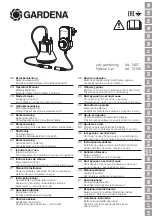
PRODUCT OVERVIEW - MIC INPUT CHANNEL
1. XLR input:
This input receives balanced signals from -50dBu to
-7dBu - a range of 43dB, which therefore permits you to connect any
audio signal to the mic unit. The input is dedicated to microphone
signals.
2. YELLOW/instrument phone plug input:
This input receives
unbalanced signals from 0dbu to +38dBu. The 38dB range lets
you connect any musical instrument pickup to the unit. The input is
dedicated to instrument signals.
3. INSERT:
This works in a similar way to inserts on other mixers.
However, a related “bypass” switch (see 5 below) offers additional
possibilities.
4. P48:
This button, when depressed (red light), delivers 48V
of phantom power to the microphone. The mic will usually be a
condenser or active ribbon type. A dynamic mic cannot normally “see”
phantom power (as the name suggests), but passive ribbon mics
could be permanently damaged by it. So, only use with mics that you
definitely know require phantom power in order to work. Note: The
internal circuitry raises the 48V slowly, to avoid “pops” and protect
the microphone. Therefore, allow around 10 seconds for the mic to
be working fully.
5. INSERT/DIRECT OUT:
When this button is depressed, the audio
signal in the mixer is interrupted and the Insert (3) will work in the
usual way. By connecting a mono jack, you get the simple output
line signal on the “tip”. By connecting a standard stereo phone jack,
you get the (output) signal from the “tip” (send) and the return signal
will be connected to the mixer through the “ring” (return) of the jack.
When the button is not depressed, the signal will not be interrupted
by the insertion of a phone jack into the Insert. Here, the insert
connection works as a sleeve out or “dry line out post input amp”.
You can connect a simple mono phone jack or a stereo phone jack to
the insert. The unbalanced line signal will be transmitted through the
“tip” of the phone jack. Orange light = depressed (interrupted.) Blue
light = not depressed (bypassed).
6. 10V:
This button delivers the necessary 10-volt supply for all
SCHERTLER electrostatic pickups (STAT- and BASiK series),
enabling direct connection to the YELLOW/instrument input without
using the pickup’s original preamp. The button can also be used for
connecting unbalanced electret microphones to the instrument input.
7. GAIN: Adjusting the Gain affects the amplification rate of the
input amplifier, amplifying a weak signal to a nominal level of 0dBV,
or attenuating a stronger signal so that a nominal signal of 0dB is
always present at the output of the mic input amp.
1.
2.
3.
4.
5.
6.
7.
8.
9.
10.
11.
12.
13.
14.
16.
15.
Содержание Arthur Prime 13
Страница 1: ...arthur PRIME SERIES USER MANUAL V2 ...
Страница 11: ...TECHNICAL INFORMATION SIGNAL FLOW ...






























